Introduction
Excavation projects can present unique challenges, and selecting the right equipment is crucial for success. In this article, we address the importance of choosing the proper trench digger and provide solutions to common problems faced by construction professionals. By assessing project needs, selecting the right model, planning the rental period, ensuring proper maintenance, optimizing the worksite layout, training the team, and monitoring and adjusting processes, you can enhance productivity and efficiency.
Join us as we delve into these key considerations and discover how to maximize the potential of rented machinery in your construction projects.
Assess Your Project Needs
Selecting the proper equipment is integral to any excavation project. Prior to renting a trench digger, thoughtfully analyze aspects like the expanse of your venture and the unique characteristics of the site. Different soils—clay, sand, silt—or landscapes direct different machinery needs.
Addressing the exact trench dimensions and depth ahead of time ensures optimal efficiency, avoiding project delays and unnecessary expense.
Take inspiration from the Delapré Digs archaeological project where meticulous recording of finds in various contexts illustrated the importance of using appropriate digging techniques and tools, showing that the right equipment can unearth far more than dirt—it can reveal history. Leveraging rentals not only simplifies the logistics of acquiring and maintaining specialized machinery but also presents a learning opportunity, as expressed by participants of the project who found both personal connection and communal engagement through the process.
Amidst the industry's digital transformation, the choice of trench digger becomes part of a larger narrative of technological adoption. By selecting the properly sized and equipped digger, managers not only navigate the physical job at hand but align with the movement towards a smarter, leaner, and safer construction technology ecosystem, as evidenced by the growth of equipment management software and persistent innovation in the sector.
Construction project success fundamentally relies on the rigorous interrogation of needs versus resources, a sentiment echoed by industry professionals: 'What’s the cost and what’s the benefit?' Apply this reasoning to your equipment rental decisions to derive maximum productivity. By engaging in informed and strategic thinking mirroring the construction industry's evolution towards enhanced efficiency and safety, projects can remain dynamic while upholding the highest standards of execution.
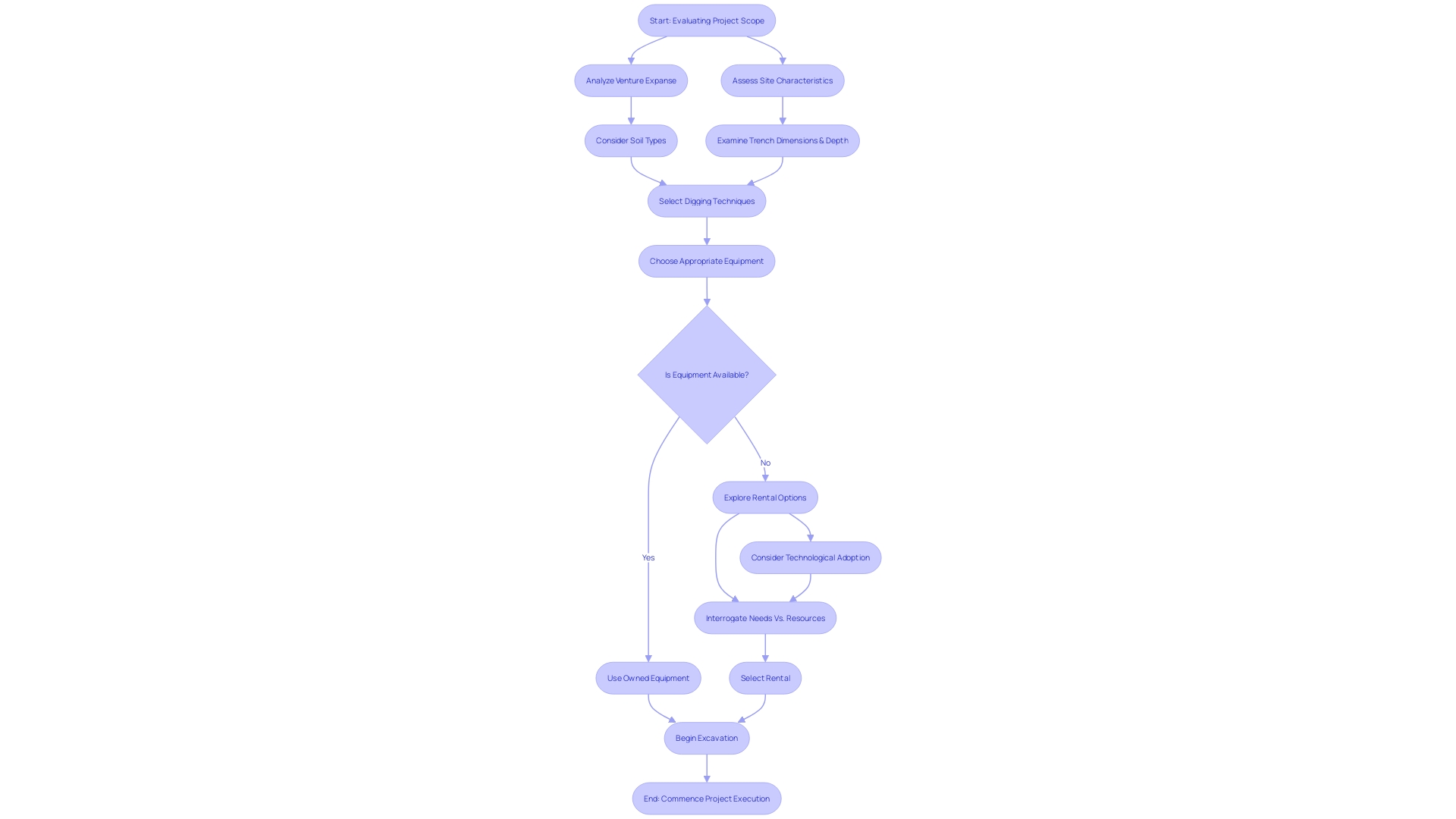
Choose the Right Trench Digger Model
Selecting an optimal trench digger for your project hinges on a balanced consideration of power sources, sizes, and attachments for the machinery. Innovative approaches to workflow efficiency, as highlighted by Yuji Ito of Obayashi JV, emphasize the importance of reducing downtime through continuous movement and steady progress. Similarly, choosing a trencher designed for your specific needs ensures steadfast advancement with minimal interruptions.
Sustainability has become a focal point for construction machinery efficiency. Drawing from the eco-friendly initiatives of machine manufacturers, which aim to build diesel engines that prioritize fuel efficiency and reduced emissions, it's fundamental to factor in the sustainability of the equipment. The usage of Hydro-treated Vegetable Oil (HVO) emerges as a viable alternative to traditional fuels, raising valid inquiries about its safety and compatibility with equipment.
The concept of productivity has many facets, as noted by the Federal Reserve Bank of San Francisco. Worker skill level, efficiency-enhancing equipment, and intelligent task organization significantly influence productivity levels. Consequently, the selection of a trencher isn't merely about its functional capacity but also about how it contributes to labor quality through its ease of use and reliability.
Directly boosting productivity often comes from systematic improvements to the work process. An efficient trench digger fits seamlessly into the construction process, echoing Henry Ford’s innovative assembly line principle by delivering its utility to the worksite, thus expediting the completion times. Ensuring that the machine's function aligns with the strategic goals of your project is crucial for heightened efficiency.
Furthermore, Perceptive's advancement in robotics demonstrates the considerable time savings that the right technology can wield, stressing the importance of selecting machinery that is not just innovative but also aligns with the project's demands.
For construction professionals, the aim is to harness the trench digger as a tool to shape the earth with precision while also shaping a more sustainable and productive future. The right machinery choice is an investment in efficient operations that powers both immediate progress and long-term value.
Plan Your Rental Period
When aligning machinery rentals, such as a trench digger, with your project's timeline, precision is key to avoiding both idle equipment on-site and rushed work due to late arrivals. By engaging in deliberate logistical planning and committing to proactive scheduling, you ensure that the tools are at your disposal for just the right amount of time. This thoughtful coordination promises not only a more streamlined project flow but also guards against the financial burden of unwarranted rental extensions.
Emulating the same meticulous attention to detail shown by Lex Machina when managing their massive database, or the swift problem-solving of Delivery Hero when eliminating account lockout delays, can optimize your use of rented machinery. Your goal is to mirror the efficiency of streamlined operations rather than falling prey to the slowdowns faced in the construction industry, as evidenced by financial strains and cash flow challenges observed across various sectors. Aim for the adaptability of those who embrace flextime by being flexible with your rental periods, thereby managing costs and timelines with the finesse that leads to successful project completion.
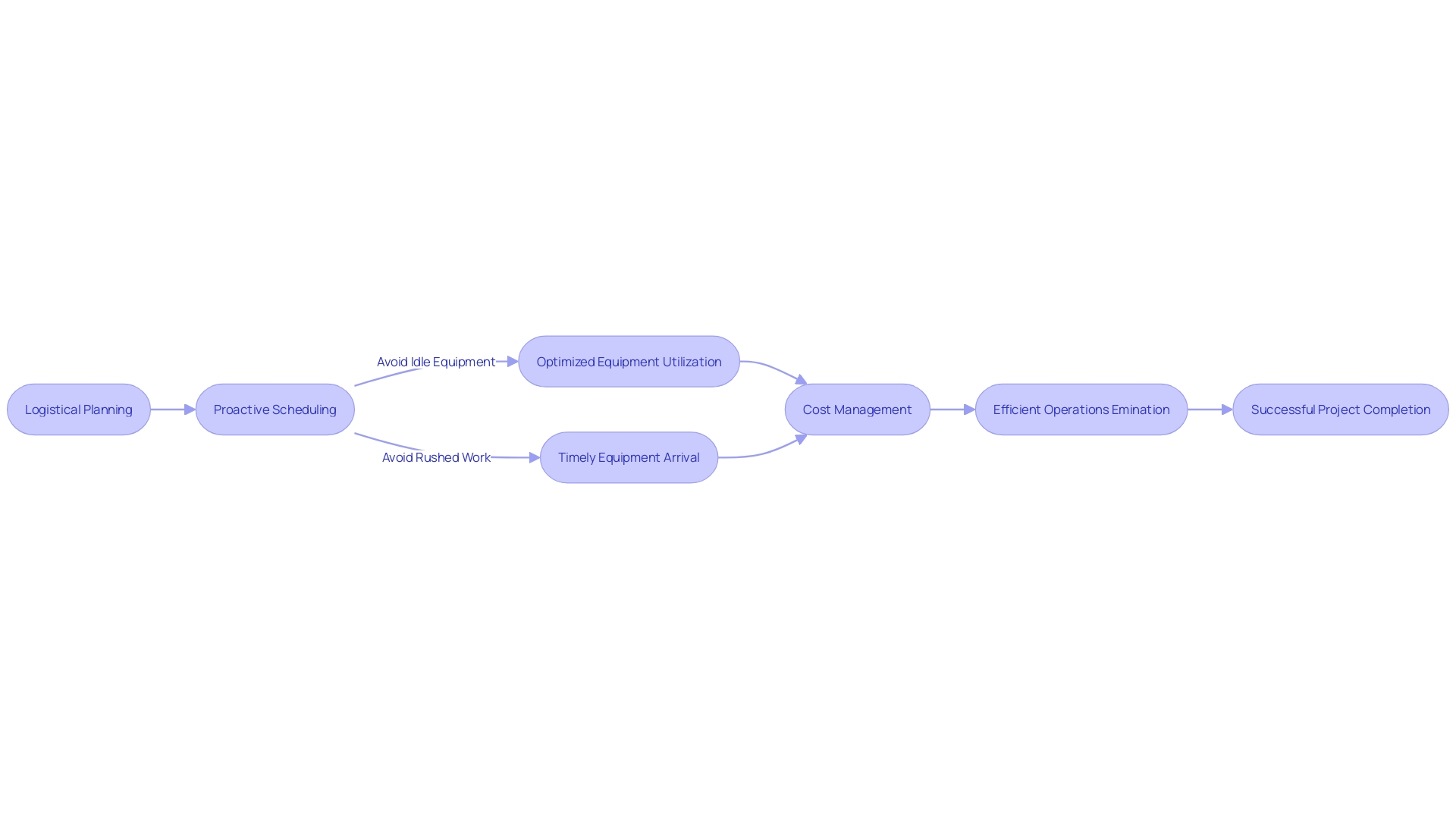
Ensure Proper Maintenance
To maximize productivity, it’s essential to keep your rented trench digger in top operating condition. Start by thoroughly reviewing the manufacturer's guidelines to ensure you understand the specific maintenance requirements for the digger. Implement routine checks to catch potential issues before they escalate and interrupt the workflow.
Cleanliness is another pivotal aspect—consistent cleaning prevents sediment build-up, which can cause malfunctions. Adhering to these maintenance steps helps reduce downtime, enhancing your project's efficiency and adherence to deadlines. Regularly maintaining your trench digger not only ensures its performance but also extends its lifespan, making it a reliable asset for the duration of your rental term.
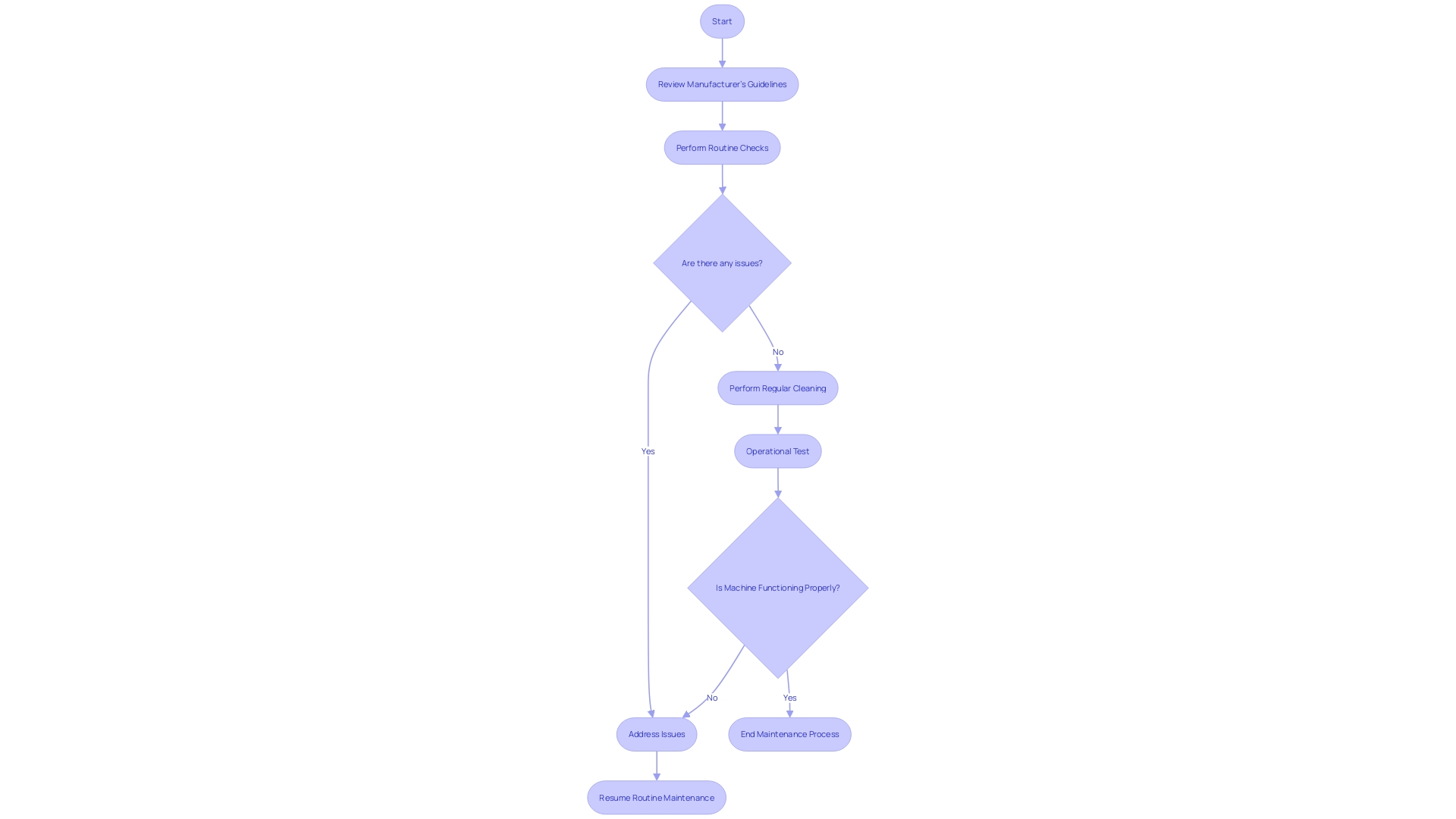
Optimize Your Worksite Layout
Crafting a systematic approach to the layout of a construction site can play a pivotal role in heightening the efficacy of operations, especially when implementing tools like a rented trench digger. A key to enhancing work site efficiency is the thoughtful organization of the space. Considerations should include the ease of access for personnel and equipment, the agility with which tools like the trench digger can be maneuvered, and strategic positioning of materials to prevent bottlenecks.
Structuring your site with intention is likened to streamlining traffic flow: when paths are clear and obstruction-free, the trench digger can operate unrestrainedly, akin to a vehicle benefiting from an absence of congestion, as noted by Yuji Ito, of Obayashi JV. This not only aids in conserving time but also amplifies operational continuity. By assimilating the organization of materials by magnitude, type, and frequency of use, as recommended by experts in workplace productivity, the trenching process becomes more fluid and uninterrupted.
Prioritized accessibility to frequently used items ensures swift retrieval and return, minimizing time wastage.
Aligning with the principles of workplace organization, Takahiro Kanemaru highlights the necessity to evaluate and finetune operational systems continuously. Embedding these practices into the worksite design, particularly regarding machinery suitability and task management, can substantially boost productivity and lead to a sizable enhancement in project outcomes.
Recent discourse in workplace efficiency underscores the relevance of understanding the individualized nature of workers and their tasks in optimizing productivity. As construction sites often host a diverse array of roles and responsibilities, acknowledging and incorporating these differences into the physical layout of the worksite is critical. By embracing the concept of wellness in the workplace, as suggested by HMC Architects, and applying it to the construction environment, not only is worker satisfaction improved, but productivity is also positively influenced.
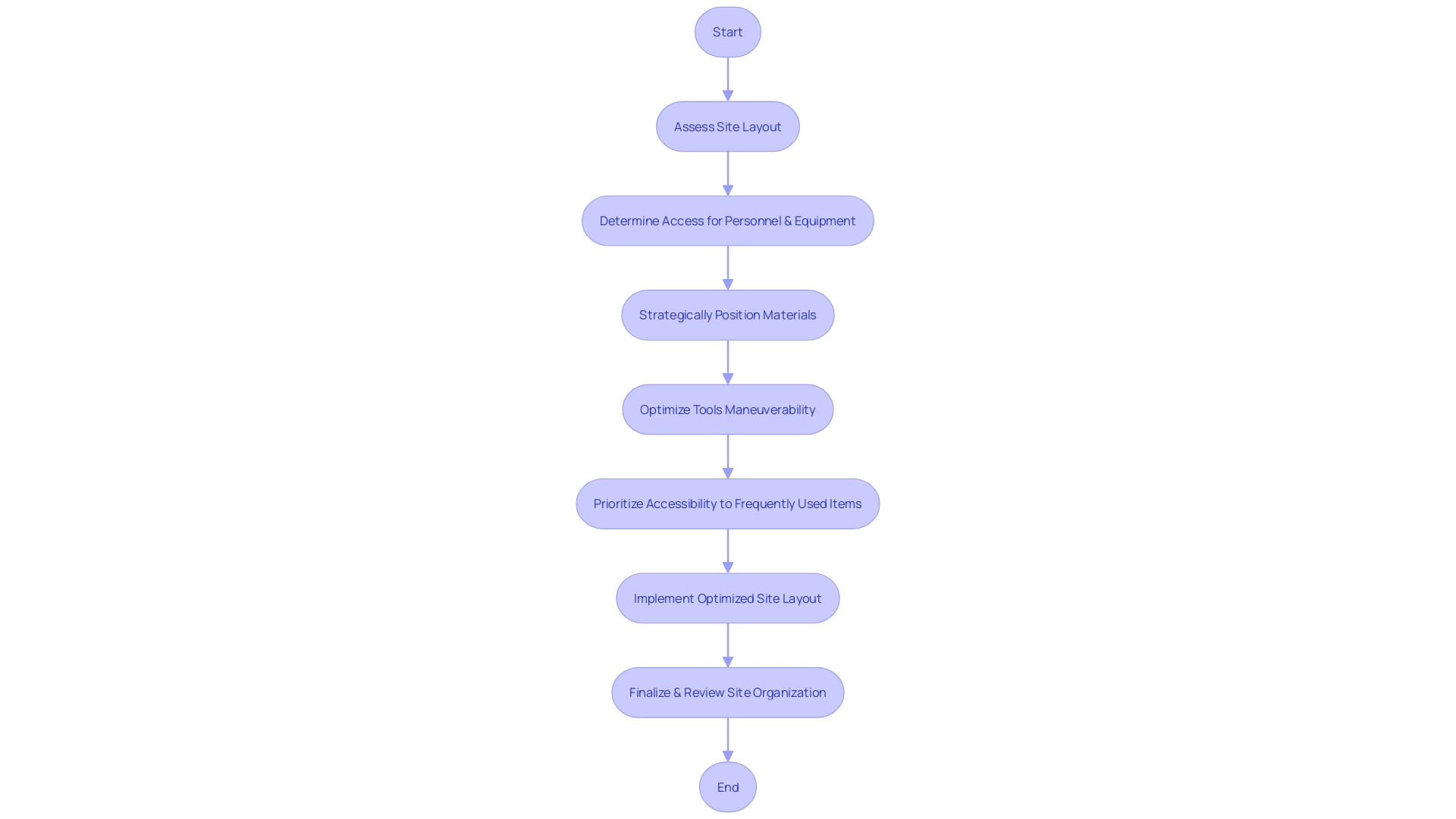
Train Your Team
Ensuring that your team can operate a rented trench digger safely and efficiently is a pivotal factor in enhancing productivity. Intensive training on the equipment is essential, not only covering machine controls and safety measures but also troubleshooting skills. When operators are thoroughly prepared, they are able to work with greater competence and confidence, leading to faster completion times and a reduction in the risk of costly mishaps.
This approach aligns with broader industry trends, as companies like Apple have demonstrated the value of coordinating a skilled team with the right tools to deliver outstanding products and services. Such an emphasis on coordination and training can lead to significant improvements in a company's productivity and overall market success. Moreover, the recent acquisition by Lensrentals serves as an example of how investment in quality equipment and customer service excellence contributes to productivity gains, further underscoring the importance of properly engaging with and preparing your team to utilize rented tools and machinery to their fullest potential.
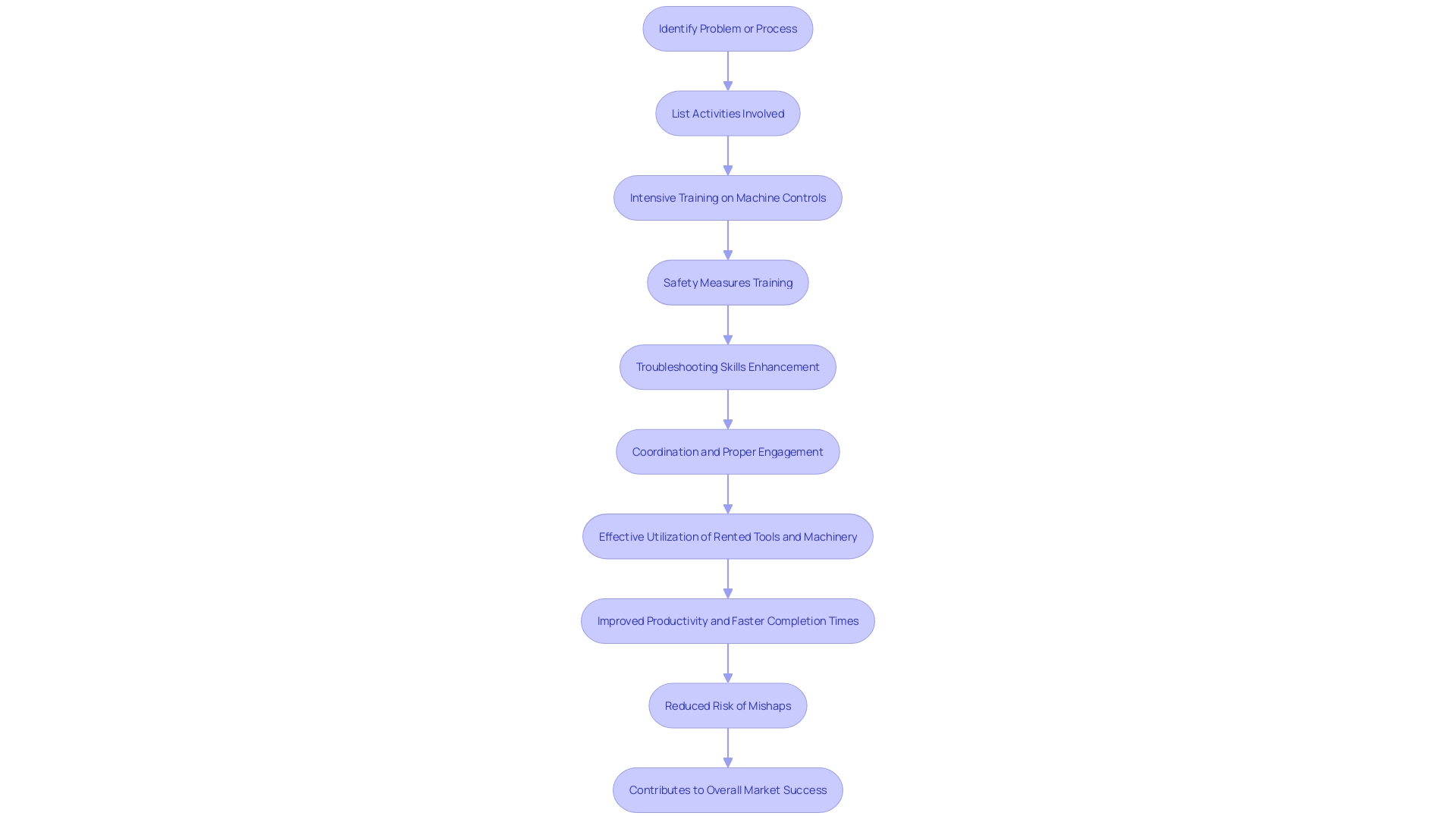
Monitor and Adjust
To leverage maximum productivity in trenching operations, it's crucial to employ a focused approach in monitoring and fine-tuning processes at every stage. Utilizing insights from industry leaders and successful case studies, such as those from the Obayashi JV and Kubota, reveals the significant gains achievable through analyzing workstations, operational flow, and tool efficiency. By integrating technology that aligns with digitalization trends, data can be seamlessly documented and communicated.
This results in error reduction and performance optimization, akin to seeking constant speed and better fuel efficiency in a well-designed traffic system. Moreover, data-driven advancements, highlighted by companies like Suffolk, offer a glimpse into future construction methodologies. Suffolk's integration of AI models to predict safety risks underscores the drive towards smarter construction sites that not only improve safety but also see substantial decreases in incident rates.
Modern equipment embedded with sensors and connectivity, in line with the digitalization of construction, aids in capturing minute operational details and transferring them into actionable insights. This enables close monitoring of worker and equipment efficacy, soil conditions, and fuel usage—factors critical to ensuring an operation's success, as evidenced by machine learning's role in optimizing bidding and site inspections. The application of AI and sensor-based technology exemplifies how we can make data-driven decisions to ensure the continuity of productivity, enhancing project delivery timelines and maintaining a competitive edge in the market.
Conclusion
In conclusion, selecting the right trench digger is crucial for excavation projects. By assessing project needs, choosing the appropriate model, planning the rental period, ensuring proper maintenance, optimizing the worksite layout, training the team, and monitoring and adjusting processes, construction professionals can enhance productivity and efficiency.
Assess project needs by analyzing the project's expanse and site characteristics. Choose the right trench digger model based on power sources, size, attachments, and sustainability factors.
Plan the rental period with deliberate scheduling to avoid idle equipment and rushed work. Ensure proper maintenance to reduce downtime and extend the trench digger's lifespan. Optimize worksite layout to improve operational efficiency and productivity.
Train the team to operate the trench digger safely and efficiently, leading to faster completion times and reduced risk of mishaps. Monitor and adjust processes using technology and data-driven insights to optimize operational flow and reduce errors.
By considering these key considerations and implementing the solutions provided, construction professionals can maximize the potential of rented trench diggers, achieving greater productivity and efficiency in their excavation projects.




